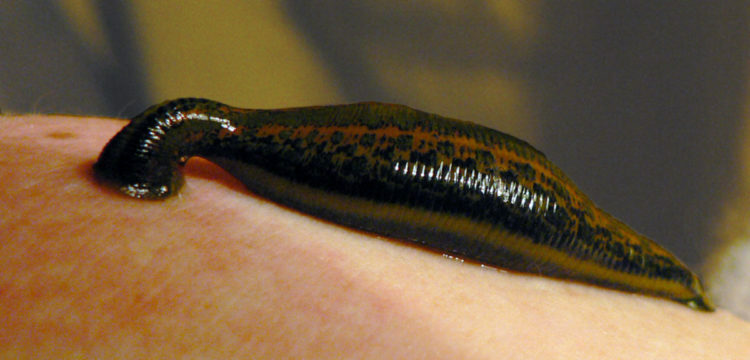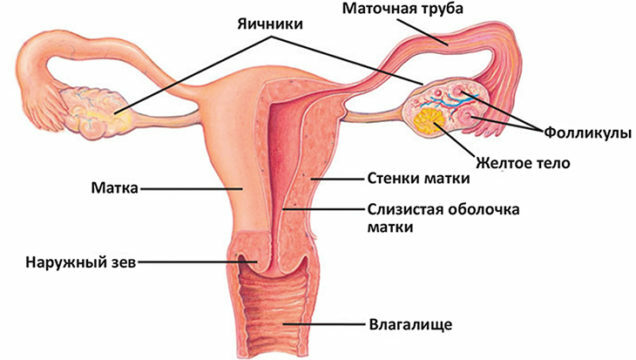Ovaries are paired organs that are of great importance in conception. It is in the ovaries that an egg is formed, which will later connect to the spermatozoon, and pregnancy will occur. Healthy ovaries are needed not only for conception, they help create a common hormonal background of a woman. Any violation in their work entails serious complications, up to infertility. The most frequent disease of the ovaries is the formation of cysts. These are benign tumors that can form in any woman.

How the
cyst is formed At a certain point in the menstrual cycle, a mature egg leaves the ruptured follicle, which is ready for fertilization. If ovaries fail, and this can be facilitated by different causes, ovulation does not occur, and conception does not occur. The unfolked follicle begins to grow, inside it is filled with liquid. This is how the atheroma is formed. It can appear alone, and polycystosis can form - many small brushes. With ultrasound, this cluster looks like a bunch of grapes.
Ovarian cysts increase in size over time. Inside they are filled with menstrual blood, and on ultrasound of the small pelvis look a bright spot. It can be confused with the yellow body, which eventually dissolves itself. Therefore, if there are suspicions of an ovarian cyst, ultrasound is repeated three months later. If the suspicious tumor did not resolve, but only increased in size - this is a cyst. If the atheroma failed in time, it can burst, and all accumulated blood will enter the abdominal cavity. This development of the situation threatens the emergence of peritonitis.
Growing formation overlaps to the ovary to access blood and tissues begin to die. If the disease is started, the organ is likely to have to be removed. If the cystic formations affected only one ovary, the woman has a chance to become pregnant, if the cysts were formed in two ovaries and caused great damage to the tissues, surgery would be required. When removing two ovaries infertility occurs.
The emergence of cystic formations
In the group at risk of this disease, first of all, there are nulliparous women of reproductive age, girls with just beginning menstrual cycle and ladies who have already had menopause.
The main causes of the appearance of cysts are:
- Injuries of internal organs;
- Overweight;
- Thyroid gland failure;
- Necrosis of tissues;
- The appearance of malignant or benign tumors;
- Poor nutrition;
- Climate change;
- Diabetes mellitus;
- Inflammatory processes of the genitourinary system;
- The failure of the hormonal background of a woman;
- Prolonged intake of hormonal drugs.
Most often, atheromas are formed with inflammation of the internal genitalia. After the treatment, the tissues on the ovaries become less elastic and the cysts begin to form faster.
Symptoms of
The body of women signals the first signs of the appearance of any gynecological disease by a malfunction in the menstrual cycle. Too frequent or on the contrary a rare monthly serious cause for concern. Therefore, doctors recommend to keep a special calendar, and to mark in it the day of the onset of menstruation.
The first symptoms of atherosclerosis atheroma are:
- Deterioration of the general condition of a woman. There is irritability, fatigue, headache. It starts to change the hormonal background;
- Disorder of the menstrual cycle. Monthly are accompanied by strong bleeding and sharp fighting;
- Body weight may increase for no apparent reason;
- The absence of ovulation and the resulting pregnancy problems;
- Allocations in the middle of a cycle with blood veins.
If the first symptoms appear, a woman will urgently need a complete pelvic examination.
Diagnosis by ultrasound
The sooner a woman comes to see a gynecologist, the better. Procrastination can only contribute to the further development of the disease.
The main method of diagnosis is to determine the ovarian cyst on ultrasound. The walls of the ovaries look thickened, gray in color. The size of the organs becomes larger.
Many patients ask a question - on which day of the cycle do you have an ultrasound? Doctors determine the optimal time for the study from the third to the fifth day after the end of the monthly .If you do ultrasound later, the ovaries slightly change.
Additional means for determining cysts are:
- Laparoscopy. This method simultaneously diagnoses the disease and immediately removes unnecessary formations. In the abdominal cavity, small incisions are made and thin tubes are inserted in them. Restoration of the body after laparoscopy takes no more than two weeks.
- Blood tests for the level of content of male hormones, fats and insulin.
Treatment of
A triggered disease can trigger a number of other diseases:
- The appearance of malignant tumors on the ovaries and neighboring pelvic organs;
- Endometriosis;
- Disease of the vascular system.
Treatment of cysts is often complex: it is hormonal therapy and surgical intervention. Hopefully, atheroma will not resolve by itself, it can burst or lead to necrosis. Usually, after the removal of education, hormonal treatment is recommended to restore the menstrual cycle and restore the level of hormones.
Cysts
Depending on the cause of the onset and the accompanying symptoms, the cysts are:
- Endometric cyst. All that is inside the uterus is called the endometrium. If for some reason, conception does not occur, the endometrium begins to be rejected by the uterus. So there are monthly. In certain cases, the endometrium may be outside the uterus, this disease is called endometriosis. Neoplasms can attach to the wall of the ovary. After each monthly cycle, the atheroma grows. The woman begins to experience pain with menstruation, worsening of well-being. After an accurate diagnosis, the endometrial cyst is removed.
- Paraovarial cyst. Usually such an atheroma is formed from the remains of an ovum or embryological tissues. She does not cause special harm to a woman, it is found out at a planned examination by a gynecologist. Paraovarial cyst can cause discomfort during sexual intercourse and is treated with hormonal drugs. Surgical intervention is rare.
- Follicular cyst. This is a benign tumor that occurs when there is no ovulation. It is formed from the follicle and is filled with liquid inside. If the formation does not reach 5 centimeters, it can dissolve through several menstrual cycles. With large physical exertion, this kind of cyst can burst.
- Serous cyst. The cause of the appearance of this type of cyst can be a promiscuous sex life, frequent abortions with complications, venereal diseases. Serous cyst of large size requires only surgical intervention.
If any type of cyst is found on the ovary, compulsory treatment is required. Most of the cysts do not resolve, and when tightened, treatments can reach menacing proportions. The consequences can be the most deplorable - from prolonged hormonal treatment to removal of the ovaries and as a consequence the appearance of infertility. Timely diagnosis and properly selected treatment will help a woman cope with the disease.





